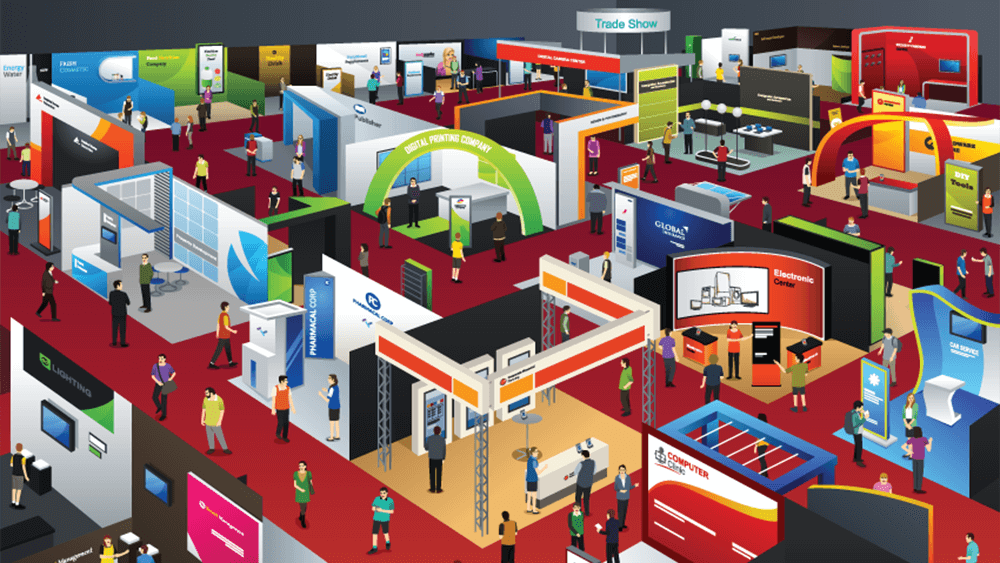
Despite lively faux convention-center environments, virtual solutions don’t quite meet the standards or ROI of in-person trade shows.
3D-like virtual solutions — complete with avatars and faux convention-center environments — are probably the closest we can get to replicating the physical trade-show environment. But while these solutions might work for low-cost consumer events like Comic-Con, they’re not best suited for business events.
Nearly every conference and trade-show professional is searching for that perfect virtual platform or pricing model for replacing lost expo revenue. Sorry, but I’ve got bad news for you. Virtual expos will never come close to replacing the revenue generated from your face-to-face expo. Here’s why:
1. Booth build-out
For live events, companies hire booth builders to design and maintain their displays. In the virtual world, we ask exhibitors to build out a custom booth on the platform the show organizer selects — for every virtual show they participate in. We’re seeing companies either opt out, give it minimal effort, or use the virtual platform as a doorway to a digital showroom they’ve built on their own turf.
2. Participation and ROI
Most virtual shows are actualizing paid exhibitor participation in the 25-percent range. The average amount paid per exhibiting company varies by show but is always considerably less than a physical event. While platform providers tout improved data on attendee behavior, booth visits, and downloads, the quality of those interactions is not ringing the bell like the face-to-face experience. Virtual expos are more like commoditized digital advertising offerings than they are immersive deal-making spaces.
3. Trust
It’s nearly impossible for a new virtual platform to be trusted out of the gate by both buyers and sellers. It will be interesting to see how virtual CES 2021 addresses these challenges in January.
While these virtual expo predictions are sobering, conference organizers should be taking steps to diversify revenue by going all in with sponsorship. Develop a program with fewer, but bigger sponsors at three levels: Premier, Industry Champion, and Collaborator.
At the Premier level, limit the number of sponsors to between four and six, and create customized packages. Cap the next level at between eight and 12. Increased exclusivity is a must.
You also should create a one-page sell sheet, and offer sponsor benefits that include passes to VIP events and/or the virtual experience; options to sponsor session and keynote speakers, program tracks, webinars, Q&A sessions, blog posts, and podcasts; and a presence at a virtual expo, demo room, branded feature area, and product showcase with lead-capture capability.
Dave Lutz, CMP, is managing director of Velvet Chainsaw Consulting, velvetchainsaw.com.
Sponsor Success
Virtual sponsorship success is not going to be dependent on your platform, prospectus, or sales skills. To make a short-term impact, you will need:
- Custom sponsorship packages that include thought leadership (i.e., speaking opportunity) inventory.
- Sponsor benefits that provide access to VIP segments and leadership.
- Sponsor benefits that go beyond the dates of the virtual event.
- Senior leaders who will leverage their relationships to open doors with major investors.
- Major investors who have a high potential of renewal.
Explore “How Four Brands Transformed Trade Show Environments into Virtual Experiences” outside of the organizer’s platform on the Event Marketer blog.
